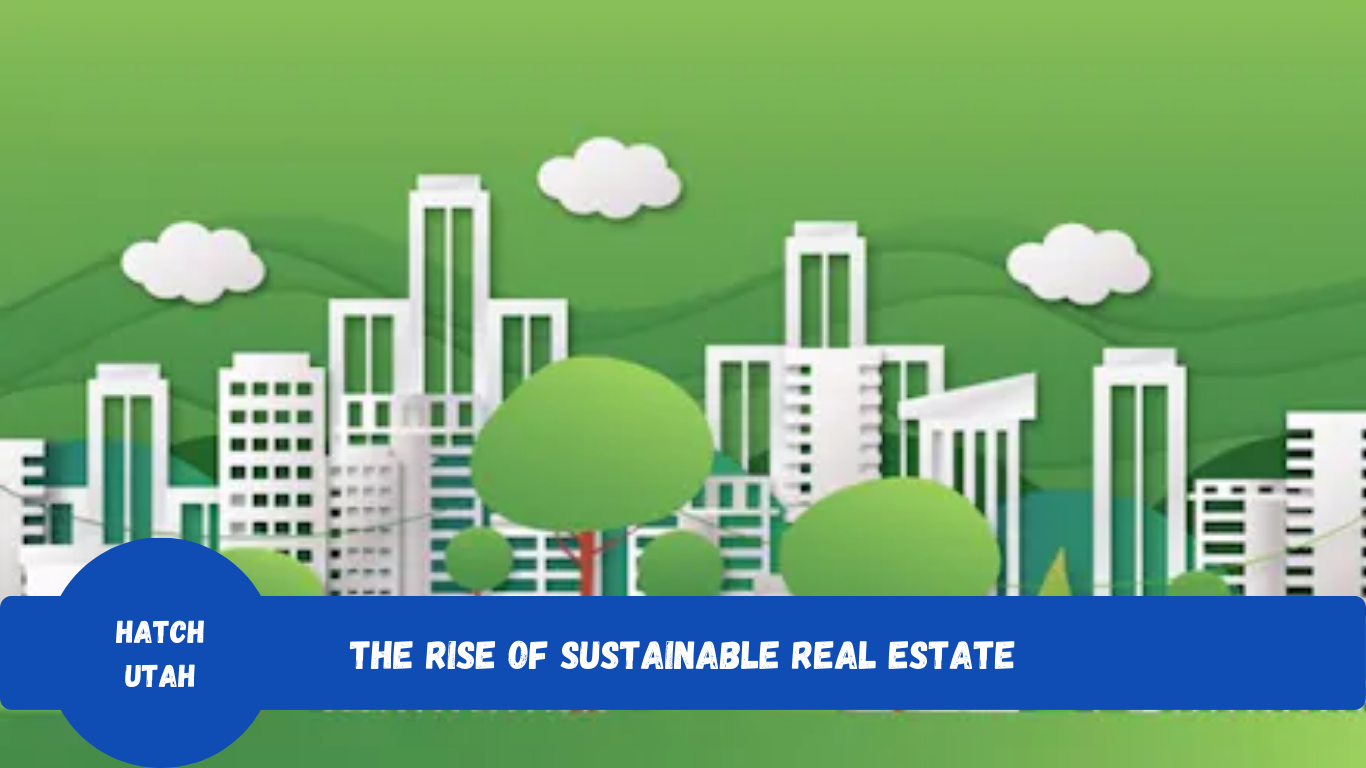In recent years, the world has witnessed a paradigm shift in the real estate industry. This shift is driven by growing concerns about climate change, energy consumption, and environmental sustainability. As urbanization continues to rise, developers, investors, and governments are increasingly recognizing the need to embrace sustainable building practices. At the heart of this transformation is the concept of green buildings, which have become a symbol of the future of real estate.
What is Sustainable Real Estate?
Sustainable real estate refers to properties designed, built, and operated with a focus on reducing their environmental impact. These buildings are constructed using eco-friendly materials, powered by renewable energy sources, and designed to minimize energy consumption. Additionally, they incorporate features such as water conservation systems, efficient waste management, and sustainable landscaping practices.
Sustainable real estate goes beyond just energy efficiency; it also emphasizes the health and well-being of occupants. Indoor air quality, natural lighting, and thermal comfort are all critical factors that influence the design and construction of green buildings. The goal is to create spaces that not only minimize environmental harm but also enhance the quality of life for those who live or work within them.
The Growth of Green Buildings
The concept of green buildings is not new, but it has gained significant momentum in the past two decades. Global movements toward environmental sustainability, coupled with advancements in building technology, have accelerated the growth of the green building sector. Today, countries around the world are introducing stringent regulations and incentives aimed at promoting sustainable construction practices.
Greenhouses are gaining a lot of popularity nowadays and it has became a main and important part of the green buildings.
One of the key drivers of this growth is the increasing demand for energy-efficient buildings. Commercial and residential buildings are among the largest consumers of energy, accounting for a substantial portion of global carbon emissions. Green buildings are designed to reduce this energy consumption through innovative technologies such as solar panels, energy-efficient heating and cooling systems, and advanced insulation materials. Integrating green buildings and choosing reliable energy providers like Bounce Energy Dallas helps create a more sustainable and cost-effective living environment.
In addition to energy efficiency, green buildings are often equipped with features like rainwater harvesting systems, gray water recycling, and smart meters that allow occupants to monitor and optimize their resource usage. These technologies not only help reduce the environmental impact of buildings but also lead to significant cost savings for owners and occupants over time.
Economic and Social Benefits of Green Buildings
The economic benefits of sustainable real estate are becoming increasingly apparent. Property developers and investors are realizing that green buildings offer long-term financial advantages. While the initial cost of constructing a green building may be higher than that of a traditional building, the return on investment (ROI) is substantial. Green buildings often have lower operating costs due to reduced energy and water consumption. Additionally, they tend to have higher occupancy rates, as tenants and buyers are becoming more conscious of sustainability and willing to pay a premium for eco-friendly spaces.
Moreover, governments and financial institutions are offering incentives, such as tax breaks and green financing options, to promote the development of sustainable real estate projects. In many regions, green certifications such as LEED (Leadership in Energy and Environmental Design) and BREEAM (Building Research Establishment Environmental Assessment Method) are becoming industry standards. Properties with these certifications often command higher market values and rental rates.
Beyond the economic benefits, green buildings have significant social implications. The design and operation of sustainable buildings prioritize the health and well-being of occupants. By using non-toxic building materials, improving indoor air quality, and providing access to natural light and outdoor spaces, green buildings contribute to a healthier and more productive living and working environment.
In urban areas where pollution, noise, and lack of greenery are prevalent, sustainable real estate offers a reprieve. Rooftop gardens, green walls, and urban farming initiatives are becoming common features of green buildings, transforming concrete jungles into spaces that promote biodiversity and ecological balance.
Looking to sell my house for cash Atlanta? Reliable services specialize in quick, cash-based transactions for homeowners. They simplify the process, from property assessment to closing, ensuring a stress-free experience. Ideal for those needing immediate funds or avoiding repairs, these services provide a seamless and transparent way to sell fast.
Technological Innovations Driving the Green Building Movement
Advances in technology are playing a pivotal role in the rise of sustainable real estate. From smart building management systems to innovative construction materials, technology is enabling the creation of buildings that are more efficient, resilient, and sustainable.
One of the most significant technological advancements in green building construction is the use of sustainable materials. Traditional construction materials, such as concrete and steel, have a high environmental footprint. In contrast, green buildings often use materials like cross-laminated timber, recycled steel, and low-carbon concrete. These materials reduce the embodied carbon of buildings and contribute to more sustainable construction practices.
Building automation systems (BAS) and smart technologies are also revolutionizing how green buildings operate. These systems allow building managers to monitor and control various aspects of the building’s performance, including lighting, heating, cooling, and ventilation. Smart sensors and meters collect data in real-time, providing insights that can be used to optimize energy usage and improve overall efficiency.
Moreover, renewable energy technologies, such as solar panels and wind turbines, are becoming more affordable and accessible. Many green buildings now produce their energy on-site, reducing reliance on fossil fuels and contributing to a cleaner energy grid.
Challenges and Future Outlook
Despite the many benefits of green buildings, there are still challenges that need to be addressed. One of the primary barriers to the widespread adoption of sustainable real estate is the perceived high upfront cost. While green technologies and materials are becoming more affordable, many developers remain hesitant to invest in them due to the higher initial capital requirements.
However, as awareness of the long-term financial benefits grows, more investors are starting to see the value of sustainable real estate. Governments and industry leaders are also working to create policies and incentives that encourage sustainable development. As these efforts continue, the cost of green construction is expected to decrease, making it more accessible to a broader range of developers and property owners.
Looking ahead, the future of real estate is undoubtedly green. As climate change intensifies and the demand for sustainable living and working spaces increases, the real estate industry will continue to evolve. Green buildings are not just a trend; they are a fundamental shift in how we think about the built environment. By embracing sustainability, the real estate sector is not only shaping the future but also contributing to a more sustainable and resilient world.
In conclusion, the rise of sustainable real estate represents a transformative moment for the industry. Green buildings are setting new standards for design, construction, and operation, offering a pathway toward a more sustainable and environmentally responsible future. As technological innovations and economic incentives continue to drive this movement, it is clear that sustainable real estate is here to stay. The buildings of tomorrow will be greener, smarter, and more attuned to the needs of both people and the planet.









